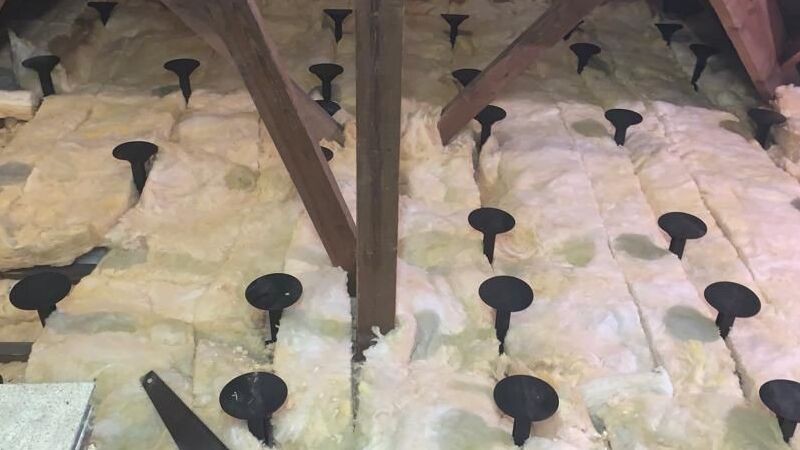Can Loft Insulation Cause Mould?
Mould growth is a concern for homeowners, and it's important to address any potential factors that could contribute to its development. In this blog, we explore the relationship between loft insulation and mould, debunk common misconceptions, and provide insights into effective moisture management practices. By understanding how to prevent moisture build-up and implementing proper insulation techniques, you can minimise the risk of mould growth in your loft.
Moisture Management and Mould Prevention:
Ventilation: Proper ventilation is crucial for preventing mould growth. Adequate airflow helps control moisture levels and prevents condensation from accumulating in the loft space. It is essential to ensure that your loft has appropriate ventilation, including ridge vents, soffit vents, or mechanical extraction fans, to promote air circulation and reduce the risk of excess moisture.
Vapor Barriers: The use of vapor barriers in conjunction with insulation can help manage moisture and prevent condensation. Vapor barriers are installed on the warm side of the insulation to inhibit the movement of moisture into the insulation layer. They act as a barrier against moisture migration, reducing the risk of mould growth.
Moisture Sources: It's important to address any potential sources of moisture in the loft. Leaks from the roof, plumbing, or condensation from inadequate ventilation should be promptly identified and repaired to prevent moisture accumulation. Regular inspections and maintenance can help identify and resolve any issues that may contribute to mould growth.
Debunking Misconceptions:
Insulation Alone Does Not Cause Mould: Loft insulation, when installed correctly and accompanied by proper moisture management, does not cause mould growth. Mould requires a moisture source to thrive, and insulation alone does not provide that source. It is important to address any underlying moisture issues and implement effective moisture control strategies in conjunction with insulation.
Incorrect Installation or Inadequate Ventilation: Mould growth may occur if insulation is improperly installed, leading to moisture traps or inadequate ventilation. This emphasises the importance of hiring professionals, like Countrywide Coatings, to ensure proper insulation installation and ventilation systems are in place.
Conclusion
Loft insulation, when installed and managed correctly, does not cause mould growth. The key to preventing mould is effective moisture management, which includes proper ventilation, the use of vapor barriers, and addressing any potential sources of moisture in the loft space. By implementing these measures and working with reputable insulation service providers, you can create a healthy, mould-resistant environment in your loft.
If you have concerns about mould or moisture in your loft, consult with professionals who can assess your specific situation and provide tailored solutions. With the right insulation techniques and moisture control practices, you can enjoy the benefits of a well-insulated and mould-free loft space.
Areas we Cover
Bath, Birmingham, Bournemouth, Brighton, Bristol, Cambridge, Canterbury, Cardiff, Coventry, Dorchester, Enfield, Exeter, Gloucester, Guildford, Hereford, Hemel Hempstead, Kingston-upon-Thames, Leicester, Luton, Milton Keynes, Newport, Northampton, Oxford, Peterborough, Plymouth, Portsmouth, Reading, Redhill, Salisbury, Slough, Southall, Southampton, Stevenage, St Albans, Sutton, Swindon, Taunton, Tonbridge, Torquay, Worcester
By accepting you will be accessing a service provided by a third-party external to https://countrywidecoatings.co.uk/



